
ART IN THE ERA OF ARTIFICIAL INTELLIGENCE
MEIAC (Extremadura and Ibero-American Museum of Contemporary Art)
Badajoz, Spain.
February 19th - May 2nd, 2021

ART IN THE ERA OF ARTIFICIAL INTELLIGENCE
MEIAC (Extremadura and Ibero-American Museum of Contemporary Art)
Badajoz, Spain.
February 19th - May 2nd, 2021
[...]
What amazed, seduced and at the same time disturbed society 25 years ago was the proliferation and omnipresence of the screen. Both television screens and digital devices were beginning to flood private and public space. In his book Écran Total (Screened Out), Jean Baudrillard referred to the electronic image in terms of its capacity to abolish distances, eliminate opposites, make reality disappear and take its place as a simulacrum, a pure surface. An empty surface on which we project ourselves both as spectators -the television screen- and as operators -the computer screen-. However, far below this spectacular layer and almost invisibly, what was beginning to function and expand even faster than the images multiplying, was the computer code. Far away from the interface and the screen, but very close to the hardware, its structure of ones and zeros emerges from the integrated circuit without generating any sign that could be recognizable to human beings. According to Baudrillard, it will be the code that will be responsible for annulling the real to make way for "hyperreality".
But the current dynamic goes far beyond the domain of the screen. From the total screen, we have moved on to total algorithms. Cell phones, for example, ubiquitous devices, are not limited to disseminating virtual images, but are the mechanisms that connect us to various agencies, which, with their sensors, collect and transmit our data. We are no longer in the presence of a multitude of screens that emit information - or subject us to a machinic subjection - but rather we are part of a network of mechanisms that process our behavior and convert it into merchandise. Immersed in an ecosystem of algorithms that compete for our attention, we are no longer the "target" of propaganda -commercial or political-, but have become the product, the commodity...
[ full text ]
Capitalism is popularly considered the cause for economic shifts that lead to inequality in class difference closely linked to cultural tensions in terms of sex, gender, race, ethnicity, and national identity. Arguably the reason why it remains difficult to grasp the way capitalism functions is because it is commonly discussed as accumulation of monetary wealth. But this is not the real value of capital. Its value has always been abstract and defined by convenience. A focus on the acceleration of technology makes it possible for the critically minded to notice the transparent process of value creation, and how it has become, at this point, fully detached from a clear relation to actual monetary wealth. Convenience across networks is mashed up with monetary value after convenience proves its ability, for example, to go viral by accumulating users; monetary value at such moment is based on careful guestimates. This is how social media juggernauts such as Facebook and Twitter were able to launch their initial public offering (IPO) with unproven business models. Their worth was defined by the number of users and how much content they produced, and the promise of growth by acquiring new users. These are the new feudal lords; in their realms, the user is more than willing to give up their content and privacy for the convenience to be connected to others. [...]
The works selected for the exhibit “Algoritmia: Arte en la era de la inteligencia artificial” offer a concrete glimpse at the relation of compression and innovation in support of convenience in order to create value that is measured as capital, but one that is purely informational. We can trace this in the selected works by noticing how some of them offer a glimpse at early reflections on artificial intelligence during the emergence of the Internet. The more recent works, recently acquired by MEIAC, provide timely critical reflections on the implications of more advanced stages of artificial intelligence, which is no longer just an aesthetic reflection on its possibility, but now actually is the backbone of a global informational economy thriving on speculative abstraction...
[ full text ]
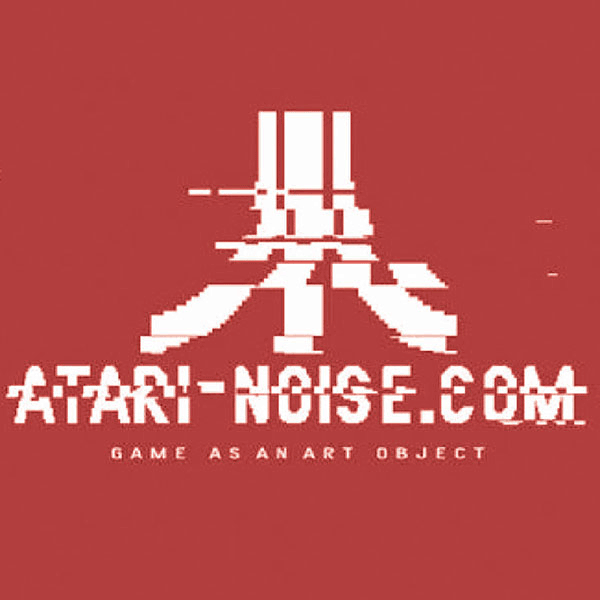
Arcángel Constantini
" I could say that a great part of my artistic production is encompassed in a “speculative realism”, a practice based on a speculation of the perception of the environment, the oneiric-concrete-digital triad. The perception of the objective and material concrete space, the subjective and immaterial oneiric space and the digital or binary space. I bought my domain unosunosyunosceros.com in 1998; the name is a semantic act by which I seek to define digital space, through this language structure, by generating an initial question: what is digital space?; and I give an ambiguous answer, a series of bits in infinite chains. My artistic practice is mainly to understand reality, and I use the digital medium to share this understanding with the community horizontally; it is not a self-referential work to the medium, they are pieces that try to dialogue with these environments, move matter and ideas between these spaces and build animistic dialogues. In the 90s I learned about the study of lucid dreaming, and simultaneously to the moment I started to produce serious art pieces; to achieve lucidity I practice mindfulness, through different exercises, and that mindfulness of reality and being lucid of its processes has been a driving force of my speculative artistic practice. Likewise, my training is self-taught and everything has been a constant learning and experimentation; I love speculative fiction literature, one of the first transdisciplinary artistic processes, which associated the field of scientific study with speculation in the narrative; with my artistic proposals I like to build experimental hypotheses that I base with pieces of aesthetic-conceptual and process character, which have multiple layers of understanding.
One of the projects that I started in 1996 and that I am still producing today, Bakteria.org, a speculation on endosymbiosis and the hologenome, a neuro-algorithm of generative drawing, a process that starts in the physical environment of the body, expands to the oneiric to reintegrate itself in the concrete space, which I then digitise to propagate it in the digital environment, to be projected again into the oneiric space of the people who interact with the project; a morphogenesis of organisms that flow in the drawing, in an extreme mutation when my genes/memes mix with the millions of genes of the microbiota I inhabit.
What has happened with these first 25 years and the previous decades of digital processes is remarkable, but there is still a long way to go; the human imagination and speculations that have been developed outstrip reality, when prehistoric proto-humans grunted at each other and picked up sticks and stones they developed language and tools; the first thing they wanted was to communicate what was going on in their mind/imagination; computer systems have allowed us to communicate more efficiently, creating simulations that are almost impossible to differentiate from reality; art made for the Internet uses a medium in which the artist presents its work directly to the public, the medium is not only an intermediary for a representation, but it is based on the creation.
An important part of my research is to understand and work with obsolescence, from machine-like systems, processes or ideas; to date I continue to explore these ideas with which I began my practice, ideas and processes that do not fall into disuse, but which are increasingly relevant to the understanding and questioning of reality.
"
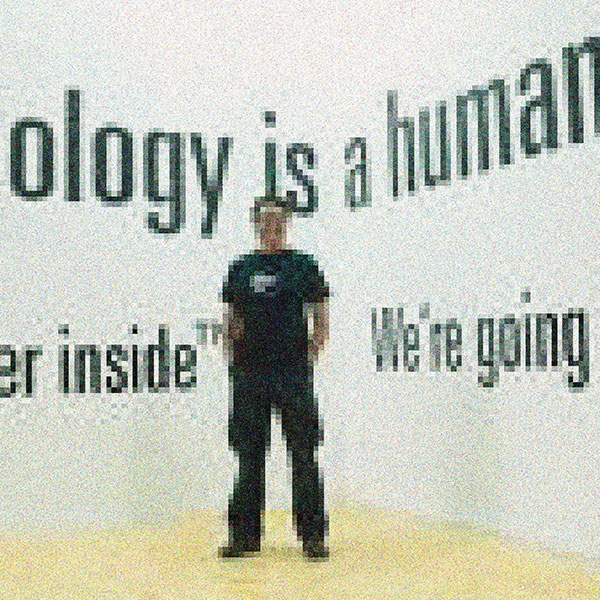
Daniel García Andújar
"I have been digging through some texts and notes from the late 1990s: "We are facing a new utopia of freedom and global access to information and knowledge which, however, we see gradually fading away if we analyze and observe carefully how events are unfolding”. Waves of euphoria with their foam fading over the crest. As you can see, I was already very critical of some positions of unconditional surrender to the digitalization processes, and I did not share certain euphoric views regarding the supposed emancipatory capacity of information and communication technologies. I was obviously aware of the processes of structural change, of fundamental transformation and of how those changes could shape social action and human experience, and inevitably influence the working process of some individual artists and groups.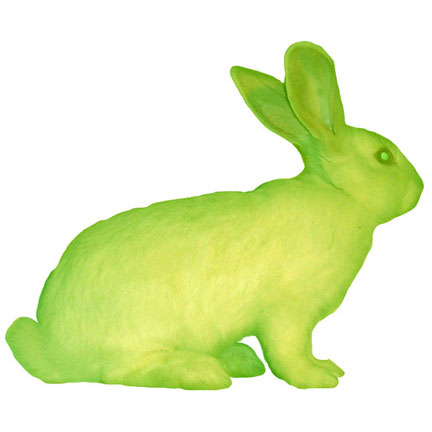
Eduardo Kac
"In the last 25 years, beyond speed increase, we have seen the development and wide adoption of mobile devices, coupled with social networking, big data, machine learning and total automation — I don't like the term "artificial intelligence" because I believe that true intelligence is indissociable from sentience, which a computer program, no matter how sophisticated, ultimately lacks. In addition, molecular biology and space technology have become more familiar to the general public and have progressively moved from the lab to the cultural arena.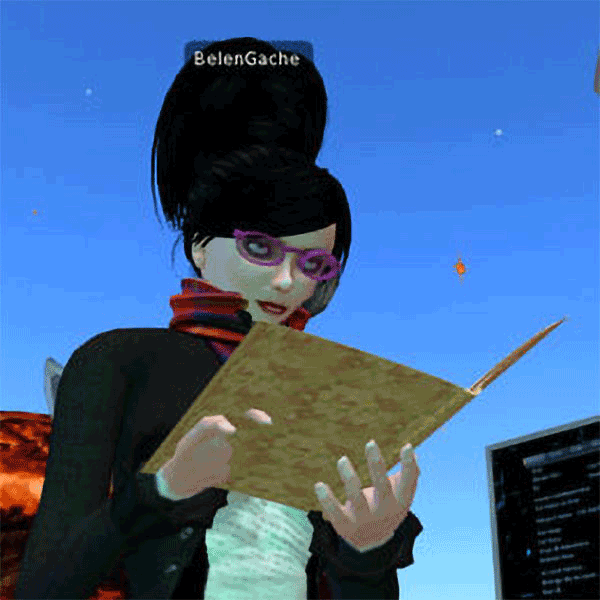
Belén Gache
"When I started making digital poetry in the early 1990s, it was like having a new toy, full of possibilities. It was playing with shaping what had no shape yet. It was enjoying the freedom given by the lack of canons. It also had a certain utopian and initiatory nature, since it was like having a secret shared by a few. Back then, cyberspace had a heterotopic quality. It was a “public” space not yet colonized by the “spectacle”, to use Guy Debord's term. The digital space presented itself as an extraordinary possibility of deterritorializing the printed book, leaving the pages, moving the letters and words, venturing into the non-linear, the hypertextual, the verbivocal-visual, the collective texts.
At that time, with the Web 1.0, there was a DIY way of working, amateur if you will. Websites were created, published and managed by the poets and artists themselves. Issues such as copyright, security or privacy were not even considered. This scenario was to change radically with the arrival of software companies that imposed patented applications, pre-designed patterns, professional programming tools, etc.
Almost 30 years have passed since I started making digital poetry. The utopia of a largely progressive network art lasted, at most, until the end of the 20th century. With the arrival of the 21st century, the rules of the game changed, particularly with the appearance of social networks. Nowadays, cyberspace is completely colonized by hegemonic discourses and ideology, by the celebrity culture and the quantitative logic of “likes”. As Debord said, if capitalism exchanged the concept of being for that of having, the spectacle exchanged the concept of having for that of appearing. Social networks are portrayed as the apotheosis of appearing. And this always occurs by reproducing the dominating stereotypes.
In his Comments on the Society of the Spectacle (1988), Debord wrote: “Ts'in Che Hoang Ti had books burned, but he never managed to get rid of all of them. In our own century Stalin went further, yet despite the various accomplices he managed to find outside his empire's borders, there remained a vast area of the world beyond the reach of his police (...). With its new techniques now adopted globally, the integrated spectacle has done much better.” Debord also argued that spectacle domination has already educated generations subject to its laws. They are guided by the language of the spectacle, the one they have learned to speak. Some of them may try to adopt positions contrary to its rhetoric, but even so, they can do nothing but use its syntax, and this is one of the main achievements of spectacle domination.
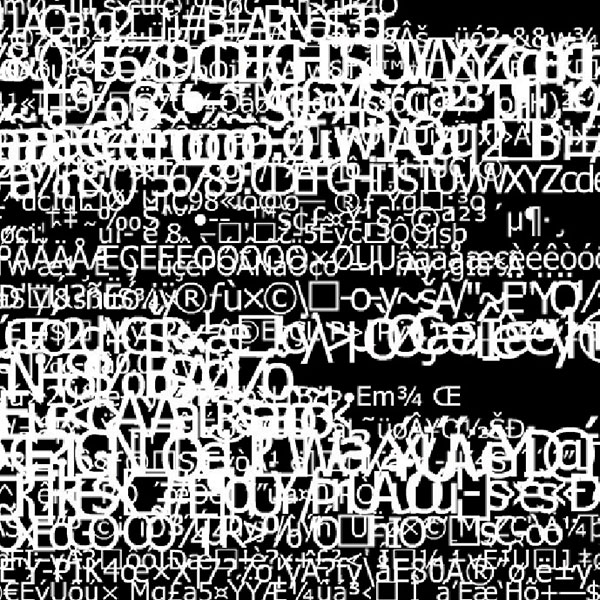
Giselle Beiguelman
"The year 2020 began with a strange feeling of revival of the 1990s. The social isolation resulting from the Covid-19 pandemic, which imposed so many changes on daily life, paradoxically revived a series of practices that haunted the Internet in its early days: video calls and virtual visits. Among them, we discovered what we already knew: living in the “parallel universe” is very tedious. In other words: the human being is a political animal; our place is the polis, the city, the street, not behind a screen. But we also discovered that museums, art galleries and cultural institutions have stuck in the age of “paleo bytes” as far as their artistic and curatorial experience is concerned. The most obvious symptom was the intensified use of social networks, e-commerce and the emergency exits pointed out by Google Art Project - Cultural Institute.
In the intense set of actions aimed at filling the void caused by the closing of museums, galleries and cultural centres, there was an eruption of viewing-rooms, panoramic views, guided tours with curators, studio visits with live broadcasts and slide-shows –many slide-shows. Among these activities, the offer of courses, seminars and debates, which had an exponential growth, stood out in particular. However, all this intensity revealed not only the lack of “natively” online collections, but also the neglect of one of the most burning discussions of the early 2000s: Internet-oriented curating was scarcely taken seriously by arts institutions. It would be a good time to check out Netescopio to re-read Rethinking Curating: Art After New Media, by Beryl Graham and Sara Cook, and the collection Curating Immateriality: The Work of the Curator in the Age of Network Systems, organized by Joasia Krysa, with anthology texts, including Christiane Paul's (“Flexible Contexts, Democratic Filtering, and Computer Aided Curating – Models for Online Curatorial Practice”).1
Certainly, the pandemic time has given rise to some radical creations, with works with the power to create languages and aesthetics aimed at the on-line context and that transcend the aforementioned viewing-rooms models, or the “teletheatre” and the Facebook planet and affiliates. In this sense, I particularly emphasize the exhibition Real-Time Constraints2 , curated by Luba Elliott and Rebecca Edwards, for the on-line gallery Arebytes, and the performance Tudo o que coube numa VHS, by Grupo Magiluth, from Recife, performed by the authors with individualized audiences, via WhatsApp and interaction with several websites and social networks. However, such creations were exceptions.
It became clear during the Covid-19 pandemic that the contemporary art circuit met the Internet due to lack of choice. Run over by the pandemic, museums and galleries joined the on-line space through the most perverse model of the neoliberalism, the “likes”, submerging into the dynamics of the “bubbles” of apps and the gentrification of the informational space by the large social networks."
2- The collective exhibition Real-Time Constraints was on show on-line between 24 July and 30 September 2020. Through a Google Chrome add-on, it presented a series of works that, throughout the day, invaded the user's screen. In its fifth edition, the BIM (Bienal de la Imagen en Movimiento) developed its own virtual platform to house its activities, which from thematic axes counterposed the format of the video playlist. In October 2020, the exhibition, which was named mirarnos a los ojos (volver a), features over seventy artists gathered around the global experience of confinement imposed by Covid-19.

Igor Štromajer
"In 1995, when I started to work online, the internet was a free, almost uncontrolled space, full of potentials, it was the most open and democratic platform ever created. At least it appeared that way. We were all impressed by the freedom and anarchy the internet was offering, by the possibilities of having free exchange of information, art, and opinions. Those were the golden times of direct online democracy. Everything was possible. It was shortly after the fall of the Berlin Wall, the East was celebrating, and optimism was all around us. Then, slowly but surely, year by year, the internet became heavily controlled commercial crap, extremely limited in the content that was allowed to be published, heading more and more towards what we have now. In that context, some of my net art works became almost illegal in certain environments, like on Facebook, because they contained explicit nudity, radical political statements, provocations, lies, deliberately false news and manipulations, etc., so it was almost impossible to discuss and present them on these platforms. The freedom disappeared almost entirely, even in the Dark Web. Strong commercial and morally conservative rules were applied. The whole of Europe, the whole world became very conservative. Facebook, Instagram and other social media demand puristic, non-problematic, beautiful and good-looking art, full of colours and senseless glitches, not my intimate, anarchistic and direct political pornography. Post-internet art and the Internet of Things are perfect examples of such conservative art forms, therefore they function well on Facebook, Tumblr, and Instagram. In that sense, the internet as such, the internet as we knew it, doesn't exist anymore.
Maite Cajaraville
"For me, technology has always been an attractive force with which I have been grappling all my life. Most of my projects have always needed some technology to be produced. And I always think of projects that require it. I think of technology and creation as the same cloud.
Since I started in the 90s with virtual reality and 3D environments, I have experienced several technological trends associated with different artistic contexts that have changed my approach to art, the process of creation, how to work with others and my way of dealing with life.
At first it was all virtual reality. It was an attempt to “simulate” reality, which did not work for me; I did not understand the idea of wanting to create something that looked like something else that already existed. So I started to use the virtual space to generate more abstract pieces such as “Espejismo” or “The Flux of Influences”, which was shown at the Haus der Kulturen der Welt in Berlin, among other places.
The integration of sensors into computers led to another conceptual leap: the interactive dimension. Switches that allowed the user to activate the narrative of the piece and triggered different visual, auditory or mechanical responses. When I was at the Institut Fuer Neue Mediem in the early 90s, these sensors were very rare, difficult to connect to the computer; you needed to know machine language and have electronic knowledge to access them. No information was available on how to do it yourself; the Internet did not exist. Everyone protected their work very jealously and there was little sharing. It was an elite.
Then the Internet came along, the WWW, and it completely changed the guidelines for developing projects. The first Mozilla forced us to unlearn the complexity of programming languages and to lower the resolution of images and videos. The GIF appeared with a basic resolution of 8 bits. The important thing was to communicate, not to be perfect. Digital space is seen as a hyperconnected common space. Hacker theories spread through the Internet and cyber-utopian visions that catch on among artists are generated. We begin to fantasize about the liberation of the art market: Technological anarchist artists dreamed of a world without gallery owners, with collective digital spaces, developed by the artists themselves, where we could cooperate, exchange knowledge and showcase our interactive pieces through digital platforms on the Internet.
It was 1998. With the support of “La Sorgona” and Jesús Domínguez in Spain, we created “Conexión Madrid” part of the network “International Cities”, based on “Die Digital Stadt” created by Xs4all in the Netherlands. Access for all and syndication of artist content to create our own platforms. This is also where “Peninsulares Video” appears as an attempt to bring together Spanish and Portuguese video creation in a single node.
In this excitement that the Internet and we were experiencing, MEIAC produced my piece “What's happening in my living room?”, in which I welcome the Internet as an entropic space that connects minorities/individualities; a space in which the role of the spectator is inverted, becoming an emitter/creator, and therefore a place of relation.
In the meantime, from 2000 to 2010, I was fascinated by the idea of being a videojockey, live creation. In the absence of digital tools, I went back to VHS and cameras connected to a video mixer. We created the group Vjeisas together with Josune Torre and Cruz Ugarte. Later we started a network project called LaptopsRus, whose ultimate aim was to increase the visibility of women audiovisual performers. And we succeeded: we united more than 200 artists in the network in four years.
The Arduino and Raspberry Pi revolution emerged in the wake of the free software philosophy. New learning methodologies flourish based on non-formal knowledge, Do IT Yourself and Do It With Others that promote teamwork and the exchange of technological progress among artists. A new international artistic community emerges. I witness all these changes through Medialab Prado in Madrid and later through my work as curator-artist at the Piksel festival.
All this has defined part of my artistic work in different ways: it has made me reflect on the aesthetics of the artistic project, avoiding single thinking, where artistic innovation really lies; on the importance of the community, and on the work process.
And so we reach the end, with free technologies; I continue to create mostly interactive pieces, I use all the means available to me, each piece asks for specific ones. I like to involve the user as the activator of the narrative, of the process. The pieces are process-based, there is not usually a “result” or a “single result”.
NETESCOPIO | MEIAC 2021